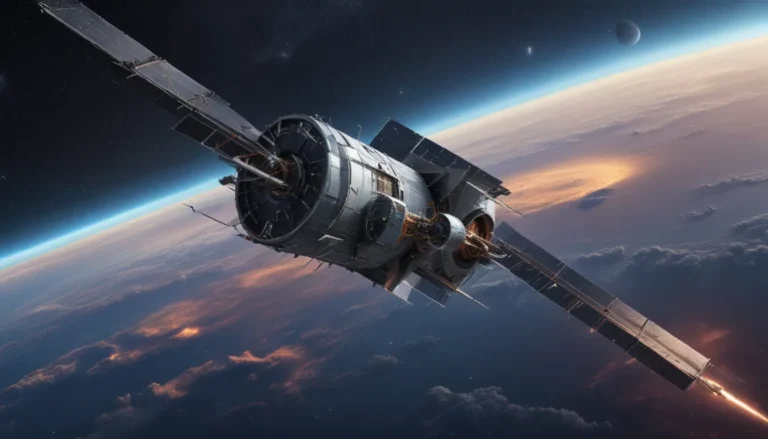The pictures we use in our articles might not show exactly what the words say. We choose these pictures to make you interested in reading more. The pictures work together with the words but don’t take their place. The words still tell you the important facts.
Welcome to the enchanting world of the East China Sea, a captivating body of water that holds within it a myriad of wonders waiting to be explored. Nestled between mainland China, Taiwan, and Japan, this vibrant sea is not only a hotspot for biodiversity but also a region of great strategic importance and historical significance. Join us as we delve into the depths of the East China Sea to uncover nine mind-blowing facts that will leave you in awe of its beauty and complexity. Let's embark on an unforgettable journey into the mysteries of this mesmerizing sea!
Unveiling the Wonders of the East China Sea
The East China Sea is a treasure trove of marine life, boasting over 2,000 species of fish and vibrant coral reefs that create a colorful underwater world. Its diverse underwater ecosystems support a wide array of unique sea creatures, making it a paradise for marine enthusiasts and nature lovers alike.
Navigating the Complexities of Territorial Disputes
This sea is not only a cradle of biodiversity but also a subject of territorial disputes among countries such as China, Japan, and Taiwan. The conflicting claims primarily revolve around the ownership of the Senkaku Islands, known as Diaoyu Islands in China, adding a layer of complexity to the region's geopolitical landscape.
Uncovering Hidden Treasures Beneath the Surface
Beneath the serene expanse of the East China Sea lie substantial oil and natural gas reserves, making it a hot spot for exploration and extraction activities. However, the utilization of these resources has been a point of contention among the countries in the region, highlighting the delicate balance between economic development and environmental conservation.
Embracing the Vital Role of Fishing
The East China Sea plays a crucial role in supporting a thriving fishing industry that serves as a vital source of food and livelihood for many coastal communities. Fishermen from China, Japan, and neighboring countries depend on its waters for sustenance, highlighting the sea's significance in providing essential resources to local populations.
Weathering the Storms: Typhoons and Maritime Challenges
Due to its geographic location, the East China Sea is prone to frequent typhoons that bring strong winds, heavy rainfall, and dangerous waves, posing challenges to maritime activities in the region. Navigating through these natural phenomena requires careful planning and preparedness to ensure the safety of vessels and crews traversing its waters.
Tracing the Footsteps of History and Culture
Throughout history, the East China Sea has been a vital trading route and cultural exchange hub, witnessing the ebb and flow of ancient civilizations that have left behind a rich tapestry of cultural heritage and historical landmarks. Exploring the sea's historical significance offers a glimpse into the rich heritage that has shaped the region's identity over the centuries.
Preserving Ecological Sanctuaries Amidst Territorial Tensions
The East China Sea is adorned with numerous uninhabited islands and islets that serve as valuable ecological reserves, often becoming the focal point of territorial disputes among neighboring countries. Balancing conservation efforts with geopolitical interests is crucial in safeguarding these pristine habitats for future generations to enjoy and appreciate.
Essential Maritime Lifelines: Shipping Routes and Energy Networks
As a major shipping route, the East China Sea serves as a vital artery of global commerce, facilitating trade between East Asian countries and the rest of the world. Thousands of cargo vessels traverse its waters each year, underscoring its critical role in connecting economies and supporting international trade networks.
The Underwater Infrastructure: Pipelines and Energy Supply
Several underwater pipelines crisscross the depths of the East China Sea, connecting offshore oil and gas fields to onshore facilities and playing a pivotal role in transporting energy resources to meet the growing demands of the region. These vital infrastructure projects ensure a steady supply of energy resources while supporting economic development and industrial growth.
Embarking on a Journey of Discovery
The East China Sea is a region brimming with fascinating facts and natural wonders that beckon exploration and discovery. Whether you're captivated by its rich marine life or intrigued by its historical significance, the sea offers a myriad of opportunities to immerse yourself in its beauty and unravel its mysteries. So, take a moment to appreciate the marvels of the East China Sea and embark on a journey of enlightenment and inspiration that will leave you in awe of its boundless splendor.
FAQs: Navigating the Waters of Curiosity
-
What countries border the East China Sea?
The East China Sea is bordered by several countries, including China, Japan, Taiwan, and South Korea. -
Is the East China Sea connected to any other seas?
Yes, the East China Sea is connected to both the Yellow Sea and the Pacific Ocean. -
What is the significance of the East China Sea in terms of maritime trade?
The East China Sea is a crucial route for international trade, connecting major ports such as Shanghai and Yokohama, and serving as a gateway to other Asian countries. It is one of the busiest shipping lanes in the world. -
Are there any notable islands in the East China Sea?
Yes, there are several noteworthy islands in the East China Sea, including the disputed Senkaku Islands (Diaoyu Islands) and the Ryukyu Islands, which include Okinawa. -
What kind of marine life can be found in the East China Sea?
The East China Sea is home to a diverse range of marine life, including various species of fish, coral reefs, sea turtles, and dolphins. -
Is the East China Sea prone to natural disasters?
Yes, the region is prone to typhoons, earthquakes, and tsunamis, which can have a significant impact on the coastal areas surrounding the East China Sea. -
Is the East China Sea a popular tourist destination?
Yes, the East China Sea attracts tourists from around the world who come to explore its scenic beauty, historical sites, and engage in water activities such as diving and snorkeling. -
Are there any conservation efforts in place to protect the East China Sea?
Yes, several organizations and governments are working towards conserving the marine life and ecosystems in the East China Sea, implementing measures such as marine protected areas and sustainable fishing practices. -
Can you cruise or sail in the East China Sea?
Yes, there are cruises and sailing tours available for those who wish to explore the East China Sea and its surrounding islands.
In conclusion, the East China Sea beckons with its captivating blend of nature, culture, and history, offering a tapestry of experiences that inspire awe and wonder. Embark on a journey of exploration and discovery to uncover the secrets of this enchanting sea and immerse yourself in its timeless beauty and profound significance. Let the East China Sea captivate your imagination and leave you with memories that will last a lifetime.






